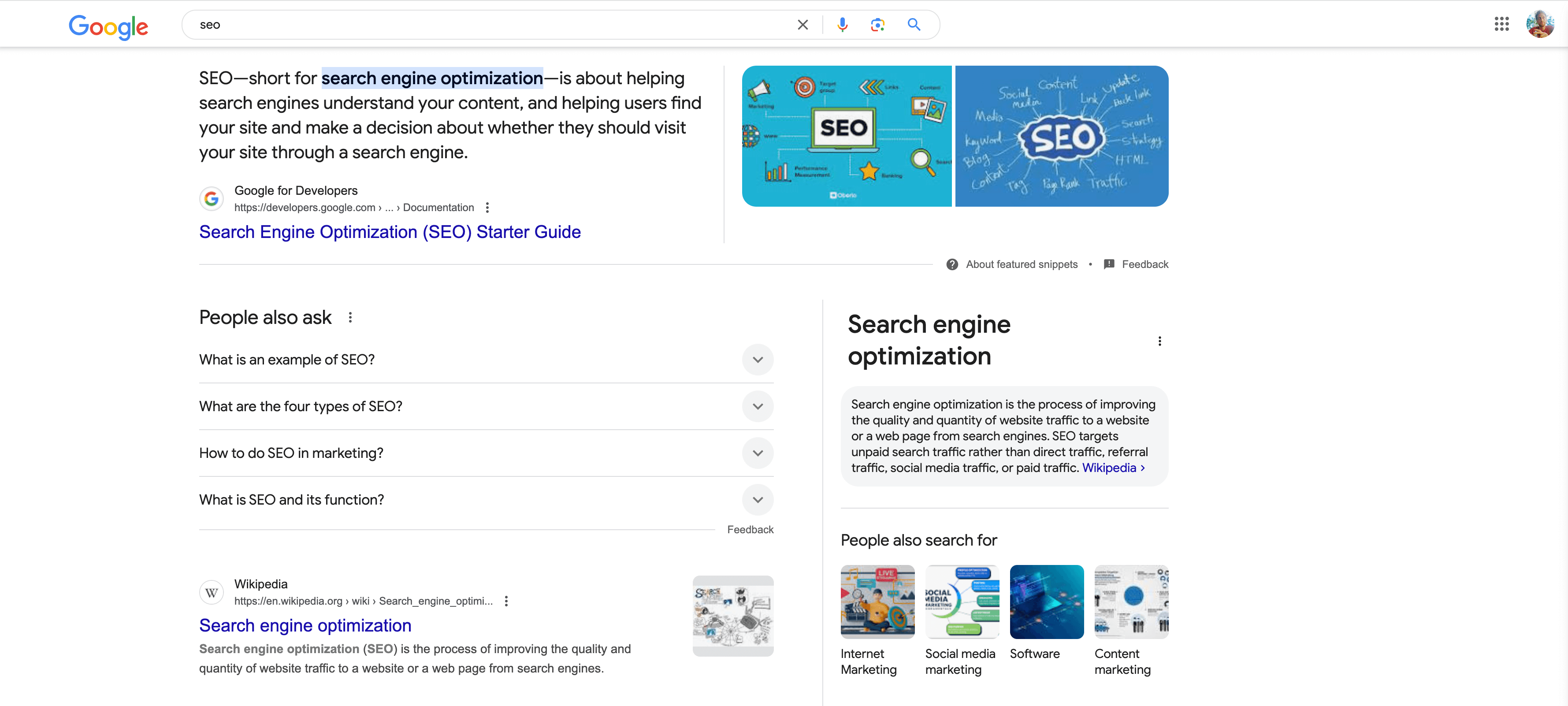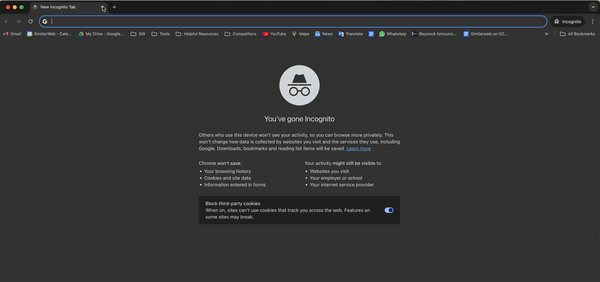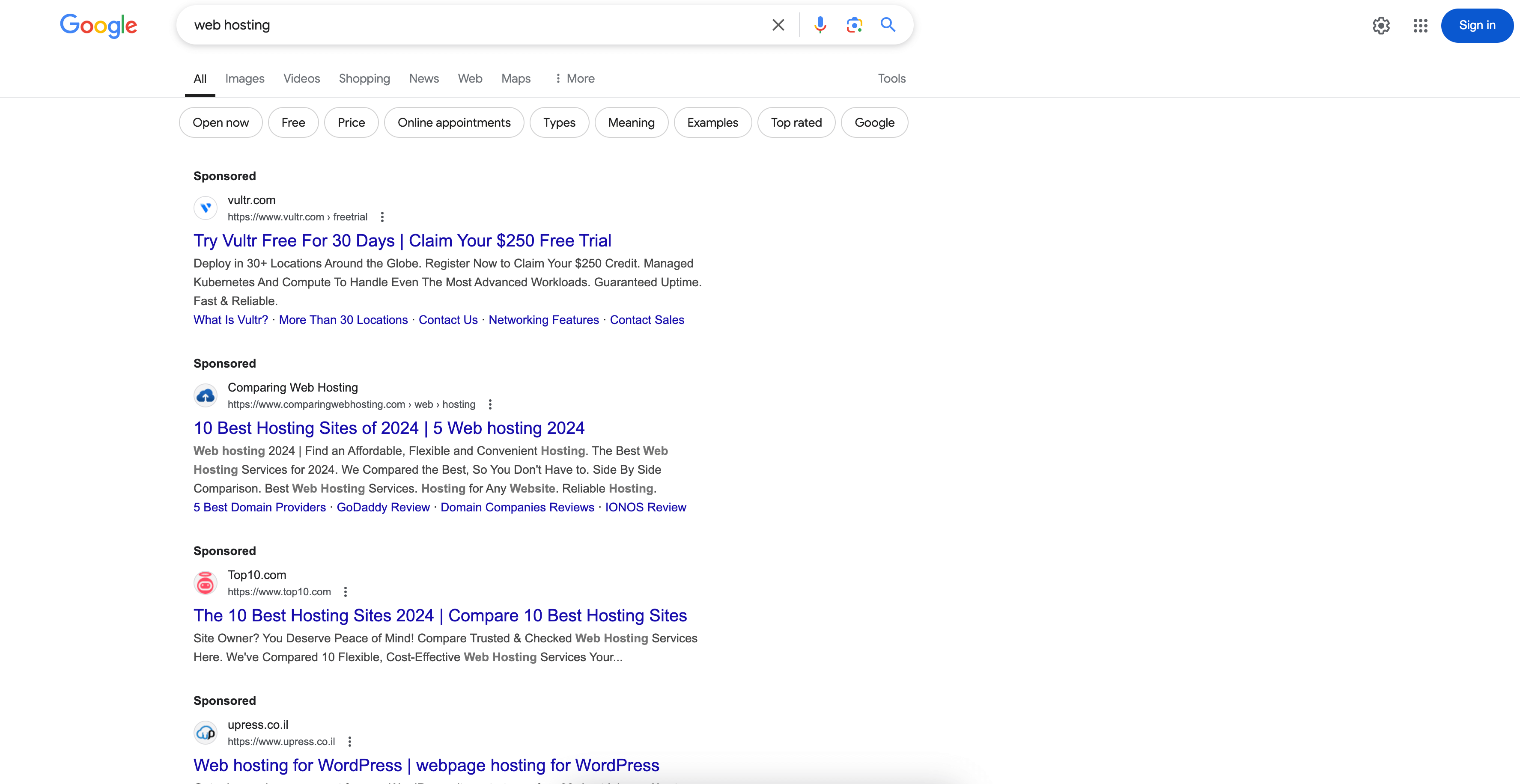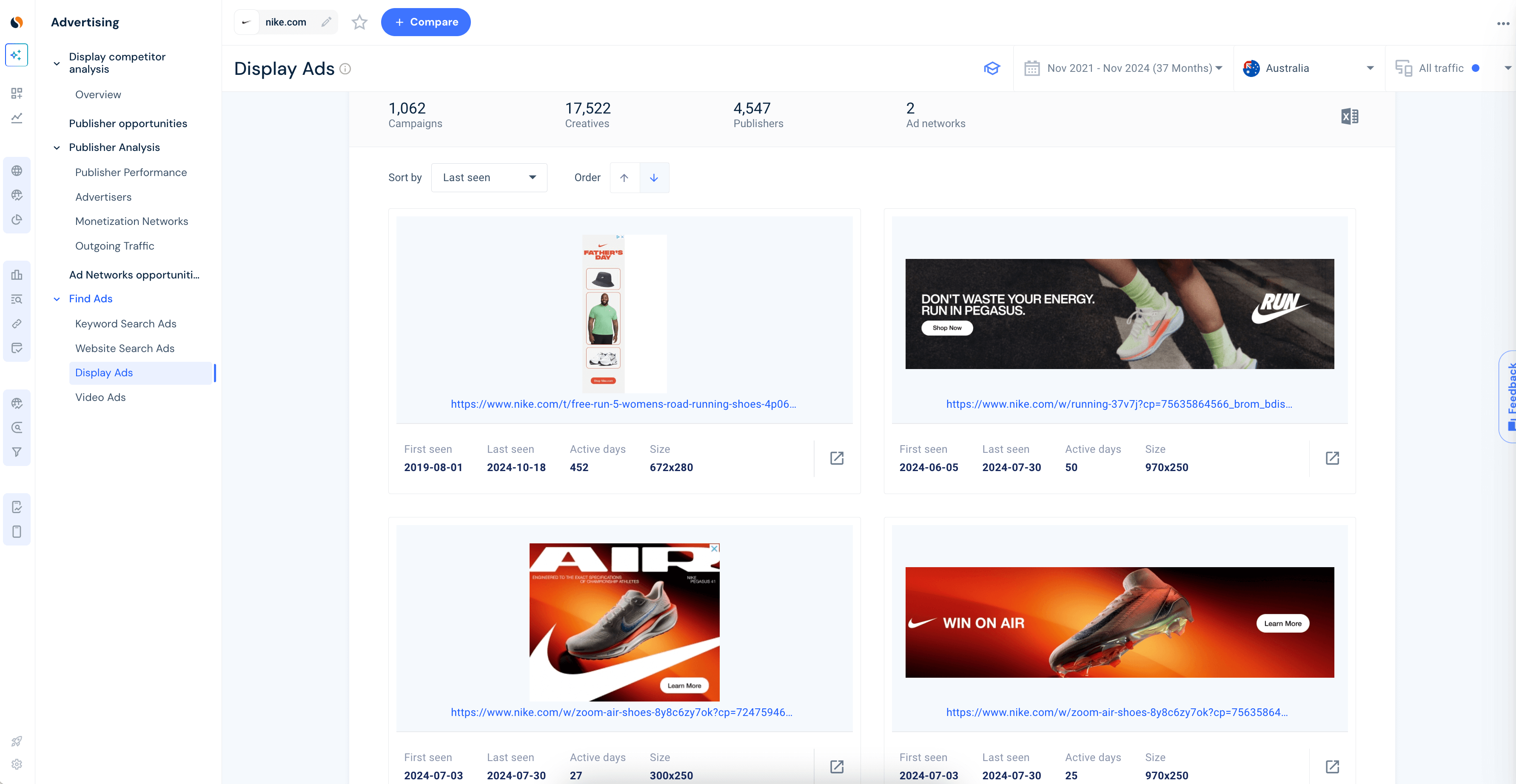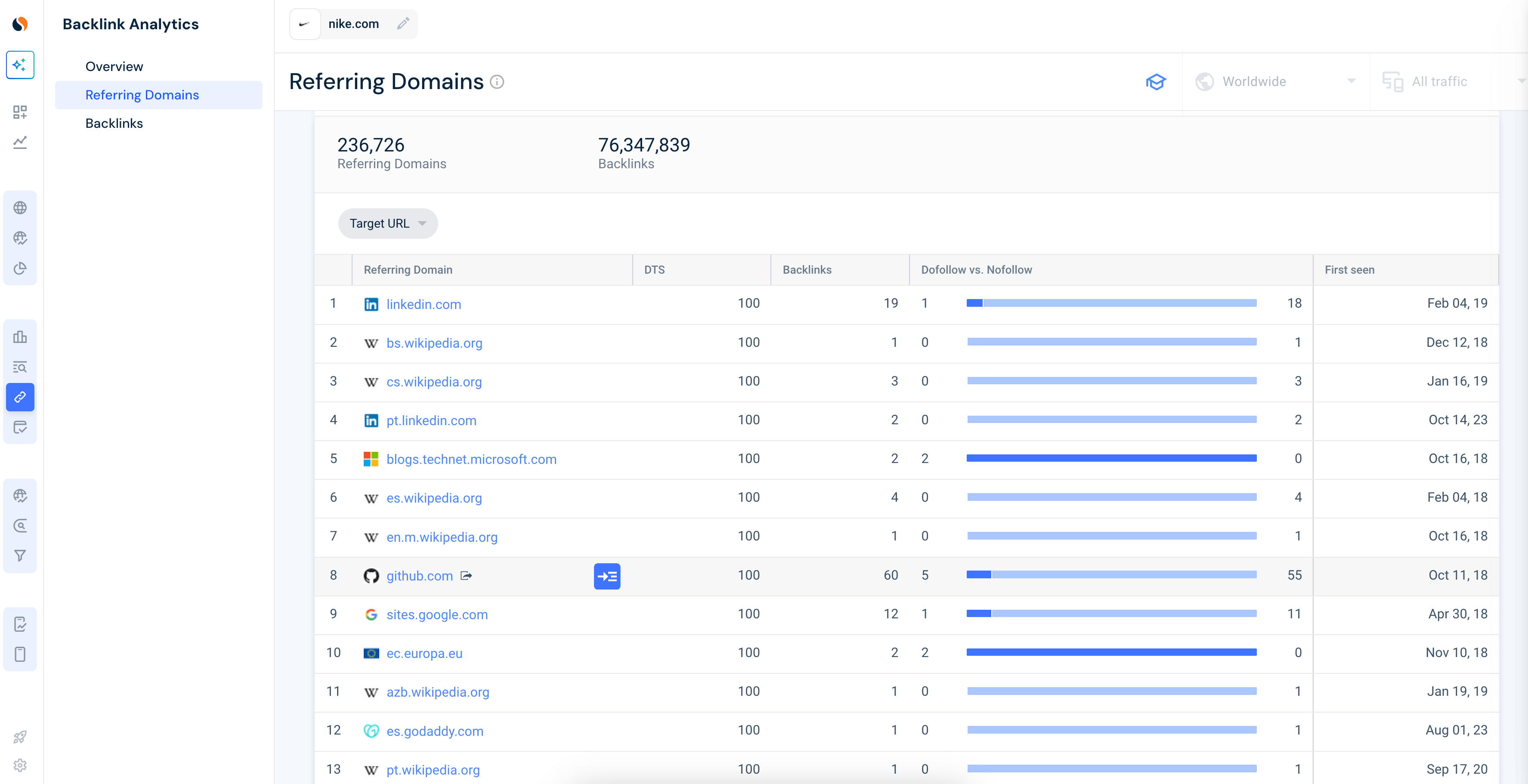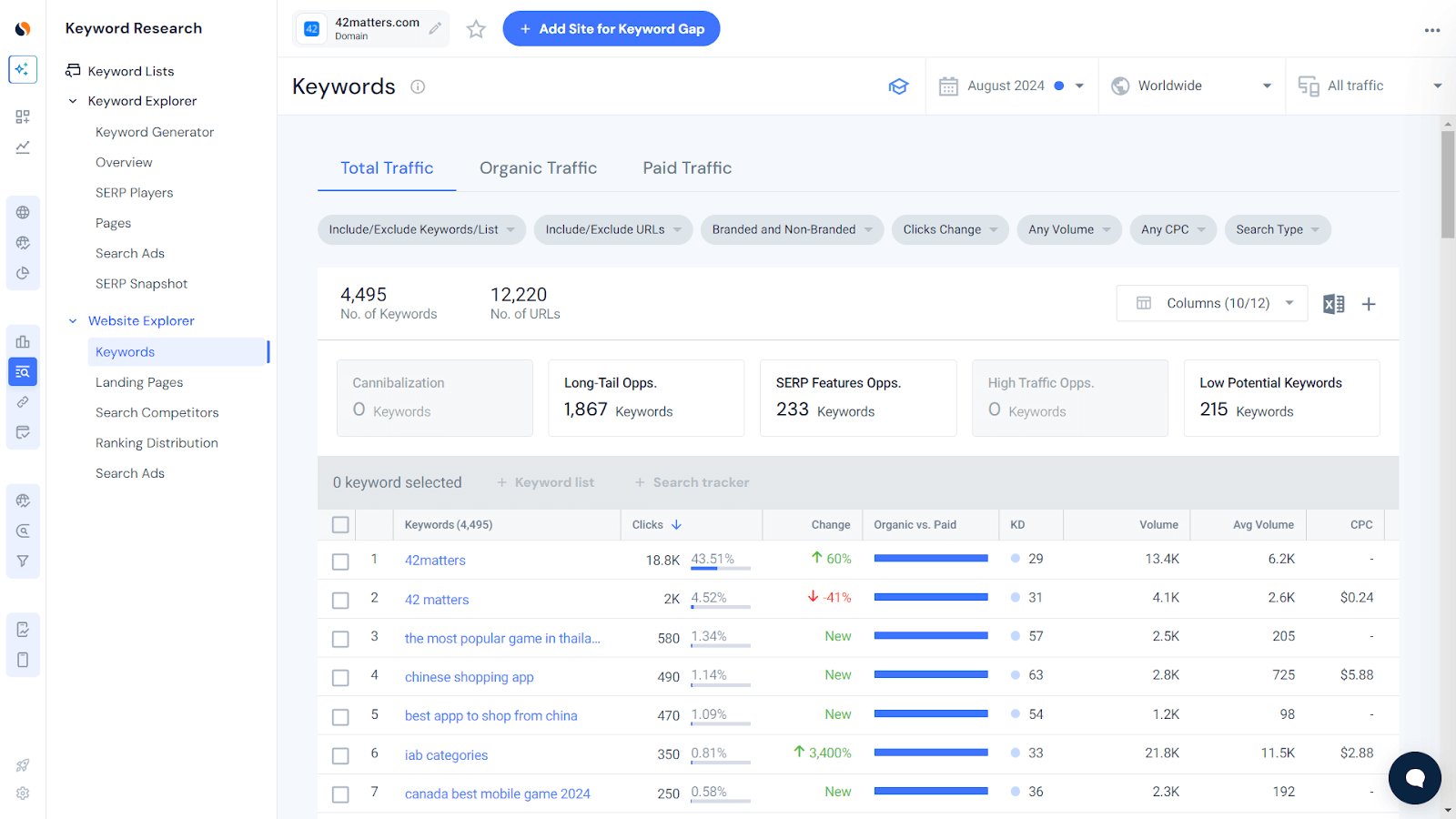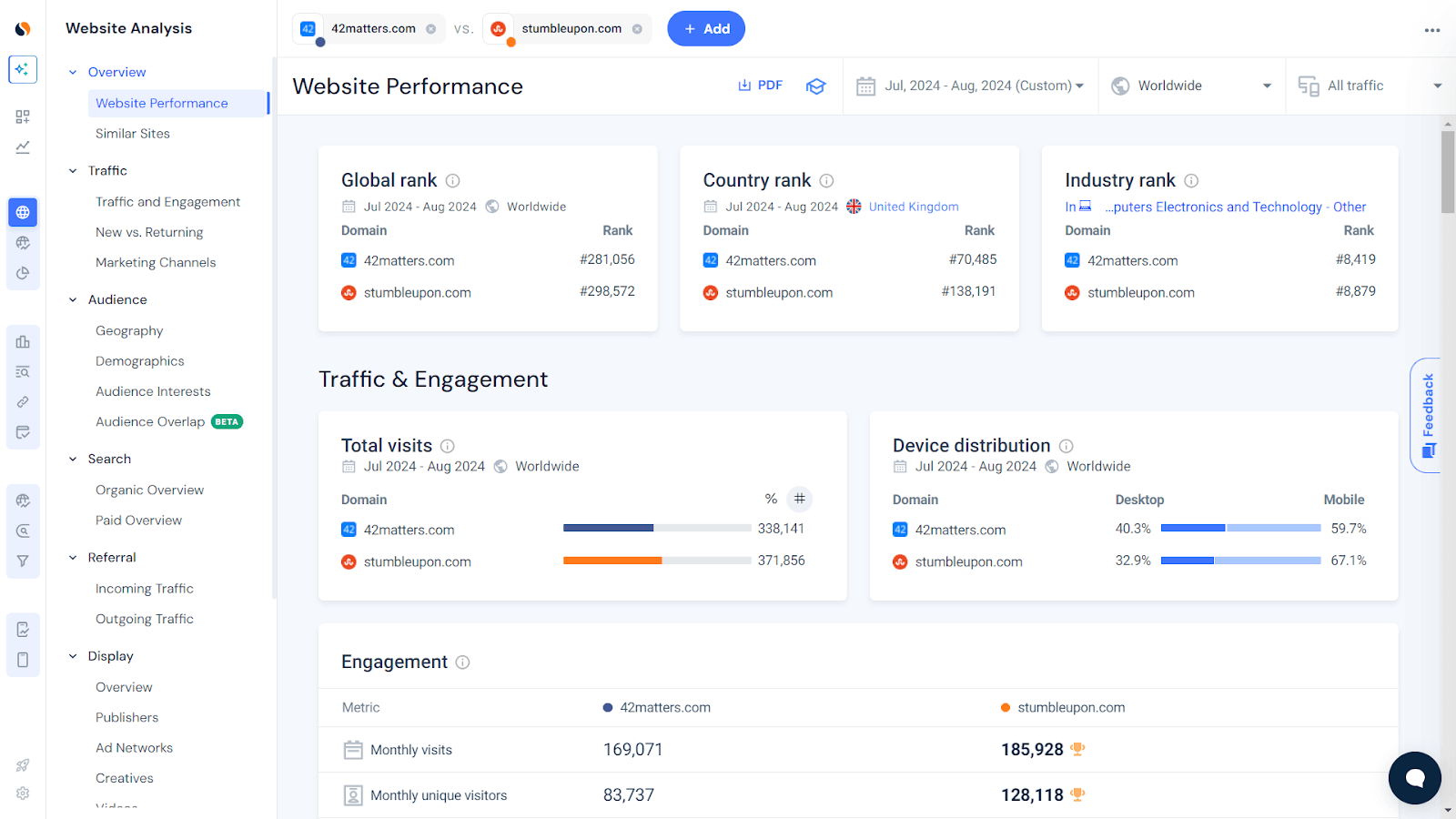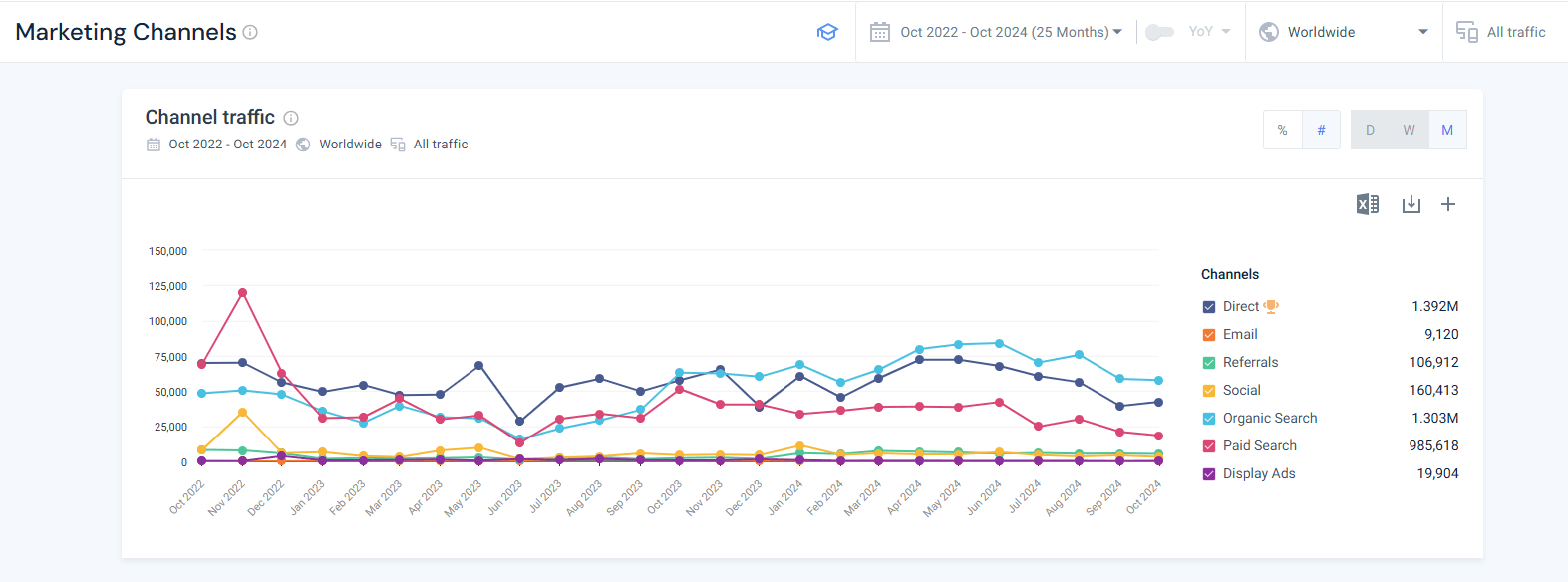18 Proven Ways to Increase Website Traffic

Driving high-quality traffic to your site isn’t easy, but the right strategy makes all the difference.
So if you’re struggling to grow website traffic, you’re not alone. It’s one of the biggest challenges marketers face—and one of the most important metrics for building a successful business.
But mastering your traffic strategy will do more than just drive numbers to your site. It’s what allows you to connect with your ideal audience, keep them engaged, and turn them into loyal customers.
In this guide, we share 18 best practices to help you grow your website traffic, from mastering the technical details to creating engaging content that builds lasting connections with your audience.
We’ll cover:
- How to create engaging, high-quality content
- The art of building a successful PPC campaign
- Ways to optimize your content for search engines
- Upping your game with targetted social media marketing
- Using data to track, measure, and refine your performance
Ready? Let’s get started!
Main website traffic sources
Before we go into the best ways to optimize traffic to your site, it’s important to understand the main sources that drive traffic.
All traffic sources will serve a different purpose in your strategy. Recognizing them will lead you to a better, more holistic strategy to cultivate an audience and keep them engaged:
Organic traffic (SEO)
Organic traffic comes from search engines such as Google, Bing, or Yandex. The idea is that the higher your page ranks on the search engine result pages, the more exposure it gets, which ultimately turns into clicks to your site.
Here’s an example of what that looks like on Google’s search engine:
Users who discover your website through organic search results are more likely to trust that the content they are about to see is reliable and relevant to their search. The key here is to create engaging content that directly addresses what your audience is searching for.
And the best part?
Organic traffic doesn’t cost anything. It’s all about optimizing your content and website for topics that matter to your business.
Direct traffic
Direct traffic comes from users who type your URL directly into their browser, bookmark your page, or click through from non-web documents like PDFs.
Tracking this type of traffic can help you identify your most engaged users. An increase in direct traffic often signals a rise in brand awareness and loyalty. These users are intentionally seeking out your website, demonstrating a strong interest in your brand.
Paid traffic (SEM or PPC)
While paid traffic requires a budget – and not always a small one to be competitive – it is one of the most effective and high-converting traffic channels when managed correctly. By targeting the right keywords and optimizing ad performance, PPC can drive a steady stream of engaged visitors to your website.
Display ads
Display ads drive traffic through visually engaging banners and advertisements hosted on networks like Google AdSense. Designed to capture attention, these ads guide users to your website, making them a valuable tool for increasing traffic and visibility.
As shown below, taken from Similarweb’s Display Ads Competitive Analysis tool, brands can analyze multiple creatives running across various regions and platforms. This helps identify which ads perform best with specific audiences, ensuring optimal campaign efficiency.
Referral traffic
Referral traffic occurs when visitors arrive at your website by clicking a link from another site. This often happens when your content is featured in articles, guest blog posts, or resource pages on other websites.
Using the same example as above, nike.com – one of the world’s largest direct-to-consumer brands and a leader in the footwear industry – generates traffic from over 230,000 referring domains. This demonstrates the power of referrals for brands of all sizes: the more high-quality websites linking to your domain, the better your chances of growing traffic and fostering long-term audience engagement.
Social media
Platforms like Facebook, TikTok, X (formerly Twitter), and LinkedIn can be key drivers of website traffic. To maximize their potential, each platform requires a tailored social media strategy that aligns with its unique audience and features.
Email marketing
Email marketing is a powerful tool for driving traffic to your website, especially when campaigns are well-tagged and effectively tracked. High-ROI campaigns like newsletters, promotional emails, and drip sequences keep your audience engaged, encouraging repeat visits and fostering long-term loyalty.
For inspiration, consider these top B2B newsletters that excel at engaging their audiences:
- B2B Bite: Provides weekly industry insights, including articles on account-based marketing, podcasts, and case studies, catering to B2B marketers and solution providers.
- Marketing Brew: A daily newsletter delivering concise updates on marketing news and trends, ideal for professionals seeking to stay informed about brand strategy, social media growth, and ad tech.
- MKT1 Newsletter: Offers practical advice for startup marketers, featuring guides, frameworks, and content strategies to navigate the challenges of building and growing a startup.
- B2B SaaS Reviews: Delivers bi-weekly comprehensive SaaS product updates and reviews, assisting B2B companies in making informed decisions about tools and software.
Subscribing to these newsletters can provide you with diverse perspectives and strategies to enhance your email marketing efforts.
18 ways to increase website traffic
Driving more visitors to your website requires a mix of smart strategies and tactics. Below, we’ve highlighted the best traffic channels and how to make the most of them.
By identifying which of these methods best aligns with your goals, you can strategically use them to boost your website traffic and grow your online presence.
Content marketing
Your content is one of the most powerful tools for driving traffic to your website. It showcases your expertise, builds trust with your audience, and improves your search engine rankings.
A consistent blog strategy that reflects your brand identity and includes regular, high-quality posts is essential for connecting with your audience and keeping them engaged.
Here are three ways to maximize the impact of your content marketing efforts:
1. Guest blogging
Invite guest writers to contribute to your blog and encourage them to share their posts on other platforms. Guest blogging introduces fresh perspectives to your site while exposing your content to the writer’s audience.
Additionally, writing guest posts for authoritative blogs in your industry is a great way to build valuable backlinks, enhance your credibility, and drive referral traffic. Don’t overlook opportunities on platforms like Medium to further expand your reach.
2. Repurposing content
Transform old blog posts into videos, infographics, or podcasts to reach new audiences in the formats they prefer. Repurposing allows you to extend the life of your content and increase its visibility across multiple channels.
Updating high-performing content with fresh insights and media can also improve its relevance, maintain or increase search rankings, and attract more visitors over time.
3. Using engaging formats
Visual and interactive content can amplify your reach and traffic. Infographics and guides break down complex ideas into digestible visuals, which make them easy for your audience to share.
Interactive elements like quizzes, polls, and surveys not only increase engagement but also encourage users to spend more time on your site, boosting traffic and retention.
Paid search (SEM/PPC)
When managed correctly, PPC campaigns are a powerful tool for driving website traffic. Here are our top tips for building a successful campaign that makes the most of your budget.
4. Targeting long-tail keywords
Focus on highly specific, targeted phrases to keep your ad spend efficient and effective. Long-tail keywords often convert at higher rates than general queries because they closely match user search intent.
Regularly update your keyword list using performance data to continually optimize your campaign.
5. Creating compelling ad copy
Ad copy that aligns with the user’s search intent is more effective at driving engagement and conversions.
One method for optimizing ad copy is A/B testing, which allows you to refine your messaging based on real user behavior. Including strong calls-to-action (CTAs) can further boost click-through rates and conversions.
6. Retargeting
Retargeting campaigns re-engage visitors who previously showed interest but didn’t convert. Users who have already visited your site are more likely to return compared to first-time visitors, making retargeting a highly effective strategy.
Dynamic retargeting ads that showcase products viewed or content consumed by these users can greatly increase conversion rates.
7. Budget management
When it comes to budget management, distributing your budget across campaigns helps capture valuable impressions and maximize your return on ad spend (ROAS).
Regularly review key performance indicators (KPIs) month over month and adjust your bidding strategies as needed.
Search engine optimization (SEO)
Optimizing your content to rank highly on search engine results pages (SERPs) is a crucial part of your traffic strategy.
Using relevant keywords, headings, meta descriptions, website structure, and navigation can increase your organic traffic and improve your ranking on SERPs. Higher rankings drive more free traffic to your site.
Tools like Similarweb, Google Search Console, or Google Analytics can identify where your traffic is coming from. Once you understand your organic performance, you can optimize it to attract even more visitors.
Here are four tips to help you climb to the top of search results:
8. Keyword research and optimization
Keyword research is the first step to a successful SEO strategy. By identifying the search terms your audience uses, you can optimize your content to be relevant to their queries.
Similarweb’s Keyword Research tool allows you to analyze what your audience is searching for and uncover the keywords your competitors are ranking for by entering their domains.
Once you’ve compiled your list of keywords, evaluate which terms align with your website and marketing strategy. Then, create and optimize content around these keywords to capture market share.
You can also perform an SEO and PPC gap analysis to reveal opportunities for growth. This analysis highlights the keywords your competitors rank for that you don’t, helping you refine your keyword strategy and fill in the gaps.
9. Link building
Strengthening your link-building strategy helps signal to search engines that your content is trustworthy and valuable. Start by implementing both internal and external linking practices.
Internal links connect related pages within your site, improving user navigation and distributing page authority effectively.
External links from reputable, high-quality websites act as endorsements that boost your site’s credibility. Collaborating with influencers or industry leaders is a smart way to earn these links.
Broken link-building is another effective tactic. This involves identifying outdated or broken links on other websites and offering your content as a replacement. This would give you an additional backlink to your site.
10. Core Web Vitals and Page speed optimization
Page loading speed is important for both user experience and search engine rankings.
Your site will be given a Core Web Vitals score, a set of metrics that evaluate your websites performance. To improve performance, compress images, enable browser caching, and minimize unnecessary scripts.
Use tools like Google PageSpeed Insights to identify areas for improvement. Faster-loading pages not only keep users engaged and reduce bounce rates but also boost your ranking potential, so that’s a win for you.
11. Technical SEO
Your website should be easily crawlable and free from technical problems that prevent search engine indexing.
Set up an XML sitemap and submit it to search engines for better indexing. Resolve broken links, make your website mobile-friendly, and use HTTPS for extra security.
Structured data (schema markup) helps search engines better understand your content and index it for rich results.
Social media strategy
To increase social media traffic to your site, focus on being active on the platforms your audience uses most.
You can use Similarweb to identify your audience and understand where they spend their time. By engaging them on their preferred social channels, you’ll boost social traffic to your site.
Here’s how to enhance your social media strategy:
12. Hashtags and interactive posts
You can make your site more discoverable by using hashtags, or more engaging using quizzes or raffles. Interactive content gains far higher engagement rates and shares. Branded hashtags can gather a community of users around your content and encourage user-generated content.
13. Platform-specific content
Match your content format (stories, posts, etc) to the strengths of the platform. Customize your approach based on different user behaviors. Use data analytics tools to track content performance on each platform and use the results for optimization.
14. Influencer collaborations
Get relevant influencers in the industry to share your content with their followers or write about you. Exclusive discounts or content can be offered through influencers to increase engagement and capture visitors.
15. Consistent posting
Be active and consistent. Your audience will be more likely to keep coming over to your place, so to speak, if you keep showing you’re regularly there. Social media scheduling and management tools can help you do this.
Website Performance Analysis
Regular analysis helps you to adapt your strategies well. You can use Similarweb’s Website Intelligence suite to get several insights.
16. Understand your website performance
Analyze your total traffic to benchmarks from the industry to see how your site compares to competitors. Heatmaps and user session recordings can help you better understand how users behave on your site to improve user engagement.
17. Identify strong marketing channels
You can look at traffic trends by channel to find where your strong points are and where you have some work to do. By knowing which channels give you the most traffic, you can prioritize your marketing efforts.
Using multi-channel attribution models, you can see the bigger picture of your customer journeys and identify the touchpoints that best influence your sales.
18. Perform competitive analysis
Even though you probably don’t want to copy your competitors, it always helps if you know what they are doing by conducting a competitive analysis.
Similarweb’s competitor analysis tool can help you with this. It allows you to spot traffic gaps in sources your competitors invest in that you don’t yet (or not enough) or spot where they are investing resources that are going to waste.
In short, data could help to refine competitive strategy by helping you understand your market positioning and conduct a SWOT analysis (Strengths, Weaknesses, Opportunities, Threats) based on competitor data.
Benchmark your content performance against the industry leaders. Figure out what type of content resonates best with your audience. And constantly update your competitive analysis to make sure that your strategy stays in sync with the market.
Track your traffic growth with Similarweb
It’s hard to know how to allocate your resources and make the right decisions if you can’t track your traffic growth. Similarweb has useful tools that can help give you insight into your site’s performance.
Total traffic
The performance of your site is the first thing to check. To do this, go to ‘Website Analysis’ and then ‘Traffic and Engagement’ (or try out our free website traffic checker). This section permits you to look at and check the total traffic your site receives. This will give you an idea about what is going on with your site around the clock, what your audience is doing, and whether certain marketing strategies are working or not.
You can understand how good you are and how to improve from total visits, bounce rate, and session duration metrics. By regularly benchmarking your performance against industry standards and conducting a comparative analysis, you can figure out areas that require adjustments and adapt your strategies accordingly.
Traffic trend by channel
Go to the ‘Website Analysis’ section, and under ‘Traffic’, click on ‘Marketing Channels’. Here, you can analyze traffic split by channel. Because you need to know which channels generate the most visitors and how to optimize less effective channels, this kind of analysis can be helpful for reallocating resources to potentially increase your growth.
For instance, if social media drives a significant amount of traffic to your business, you might choose to allocate more of your budget to it.
Attribution models will help you see what channels are working and allow you to optimize accordingly. Multi-touch attribution can provide deeper insights into which channels your customers are using to interact with you and what your marketing ROI is.
Use Similarweb’s custom dashboards
One of the best ways to track your website’s growth is by using a dashboard that monitors your most important metrics and KPIs. Using Similarweb’s custom dashboard allows you to create any desired layout, and provides the data you need about your website as well as your competitors.
Here’s a quick example of a dashboard that tracks both traffic metrics and demographic metrics:
Now’s the time to grow your web traffic
Driving more traffic to your website may seem challenging, but with the right tools and strategies, it’s entirely achievable.
Leverage a balanced mix of organic and paid search, content marketing, and social media to unlock the best results. Combine these tactics with a strategic approach, and you’ll soon see significant growth in both traffic and engagement.
FAQs
What’s the role of social media in driving website traffic?
Social media is a direct way to interact with your audience. Sharing valuable content, using hashtags and running ads can bring in more visitors to your site. Collaboration with influencers and interactive posts can also help you to grow your reach.
Is email marketing still effective for increasing traffic?
Yes, email marketing is one of the highest ROI-generating marketing strategies. An email campaign that’s segmented and personalized can increase traffic substantially by retaining the audience and encouraging repeat visits
Are display ads effective for traffic growth?
Display ads can be very effective, especially when they are visually appealing and well-targeted. Keeping ad creatives fresh and using programmatic advertising can help to find the best placements and generate more qualified traffic to your site.
What is the best way to promote my content to get more website traffic?
Share it on social media, in email newsletters, and on other people’s blogs. Work with influencers to get it shared. You can drive traffic to your content through targeted ad campaigns and your interactions with online communities. Make your content as shareable as possible.
Are there quick methods to increase traffic on my website within a short period?
Yes, pay-per-click campaigns, working with influencers, and social media campaigns can all deliver traffic very quickly. Likewise, organizing webinars, live streams, or tapping into the latest hot topics will deliver traffic equally fast. Likewise, writing catchy headlines and optimizing your content for search engine bots can also bring in visitors quickly.
Track your digital metrics and grow market share
Contact us to set up a call with a market research specialist
